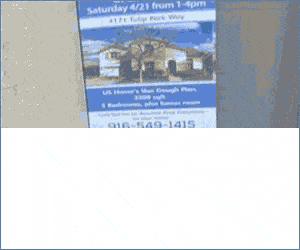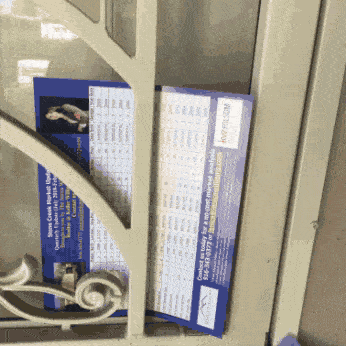[ad_1]
Typhoon Ida was once the second one most powerful typhoon to hit Louisiana over the past 3 centuries, dwarfing the beast that was once Katrina. As just about each Gulf Coast town was once put below evacuation orders, 1000’s of incarcerated other folks have been compelled to stick put, some in flooded amenities that lacked electrical energy and working water, and had sustained intense rain injury.
With telephone calls restricted and necessary cellular time initiated for weeks, other folks at the out of doors struggled to understand whether or not their family members have been OK. It was once one of the fresh examples the place imprisoned other folks have been unwillingly put “at the entrance traces of local weather trade,” Loyola College professor Andrea Armstrong stated on the time.
Because the critical climate season approaches and hurricanes, wildfires, and excessive warmth ramp up concurrently, the connections between air pollution, critical climate, policing, and incarceration were laid naked. A rising selection of lecturers and activists have referred to as at the executive to deal with the now and again fatal connections. Overdue ultimate yr, the White Space Environmental Justice Advisory Council really helpful that the White Space start critically making an allowance for the environmental and local weather implications of incarceration.
The ones with restricted mobility – the disabled, low-income, and incarcerated – steadily in finding themselves on the mercy of others. However right through screw ups, what most often helps to keep other folks alive is with the ability to transfer freely, whether or not fleeing or hunkering down.
Evidenced by means of the hurricanes washing away Southern communities, the wildfires automatically sweeping around the West, and the sweltering warmth right through the rustic, there were preventable losses of lifestyles.
The usa’s maximum susceptible are compelled to navigate the local weather disaster and the prison justice machine on the similar time.
Local weather justice connects the local weather disaster to social, racial, and environmental problems. It acknowledges the disproportionate results of local weather trade on low-income and other folks of colour.
Regularly, the ones incarcerated and overpoliced come from neighborhoods the place racism and divestment have led to environmental injustices, corresponding to air pollution publicity, and contributed to creating critical climate occasions, like warmth waves, extra intense. Then, as local weather screw ups hit, they’re incarcerated in amenities an increasing number of threatened by means of local weather trade with out decision-making energy when crises hit.
As a result of the invisible nature of incarceration, professionals argue that many of us don’t price the lives of the ones imprisoned as a result of they’re hidden away. However within the U.S., the place extra persons are imprisoned than anyplace else on the earth, incarcerated other folks constitute a big percentage of the American inhabitants and need to be safe from screw ups.
“As a result of incarcerated people are totally powerless, most of the people in society embody this disenfranchisement and environmental violence,” David Pellow, director of the International Environmental Justice Venture on the College of California, Santa Barbara, advised Capital B ultimate yr. “This tradition is an amplified case of environmental racism.”
How are the crises attached?
The local weather disaster is an increasing number of intersecting with the prison justice machine. Policing, incarceration, and local weather trade are problems rooted in buildings and coverage possible choices that experience formed lifestyles results for many years.
Redlining, segregation, and on a regular basis racism has compelled Black people into the rustic’s poisonous corridors, the place jobs were sparse, secure housing has been made uncommon, and air pollution is focused. The lived reports throughout generations have proven that this fact has made surviving tricky, particularly in comparison to the white and rich.
The dirtier the air you breathe and water you drink, the much more likely you’re to be residing in poverty, uncovered to critical climate occasions, and impacted by means of the prison justice machine – and it’s all intensified by means of race, in particular being Black, which provides a plethora of different stressors to lifestyles in The usa.
Learn Extra: How Psychological Sickness Amongst Black American citizens Is going Misdiagnosed
In 2018, researchers discovered that the US had made “no growth” in decreasing the revenue and wealth hole between Black and white families during the last 70 years, and as dozens of research have proven: the poorer you’re, the much more likely you’re to be incarcerated.
And irrespective of revenue stage, Black people are uncovered to probably the most air pollution from each form of supply (business, agriculture, all cars, development, and home) when in comparison to every other racial team within the U.S. This has been attached to incarceration as neatly. A 2021 find out about discovered that kids uncovered to raised ranges of air air pollution had a better chance of being incarcerated.
Publicity to air pollution has been related to deficient decision-making talents as pollution input the bloodstream, impacting temper and mind chemistry. In a single Los Angeles-based find out about between 2005 and 2013, researchers discovered that even if managed for plenty of social, financial, and circumstantial variables like climate, violent crime was once 6.1% upper on days with grimy air than on days with blank air.
Likewise, local weather screw ups create distinctive ranges of rigidity, pulling at the fight-or-flight mindset that has additionally been related to lowered concept processing features. It doesn’t lend a hand that during occasions of crisis and rigidity, sufferers of climate occasions also are overpoliced, as observed right through Typhoon Katrina, when 11 other folks have been shot, 5 demise by the hands of New Orleans police.
In the long run, environmental injustices and local weather occasions have “created a prison and jail pipeline,” in line with Yvonka Corridor, director of the Northeast Ohio Black Well being Coalition. “We’re poisoned, beginning as kids. We discover lead in our blood and bones. Then, it stops our skill to completely expand cognitively, inflicting deficient decision-making.”
“Then, you upload the truth that a lot of our communities are deficient. They’ve created a prison and jail pipeline,” she defined.
Why is incarceration an environmental injustice factor?
Over the past a number of many years, lecturers, neighborhood organizers, and incarcerated other folks have step by step referred to as the act of incarceration “poisonous.”
Extending past the character of imprisonment and solitary confinement, stakeholders indicate the top focus of amenities on poisoned land and the precise chance that those amenities must be impacted by means of wildfires, flooding, and excessive warmth.
With that critical chance, incarcerated other folks have additionally been made into local weather employees, who’ve fortified structures towards floods and fought wildfires around the West.
As different citizens evacuated to protection right through Typhoon Ida in 2021, dozens of inmates — some reportedly detained pretrial — have been recorded filling up sandbags to give protection to county-owned homes towards flooding. In California, imprisoned other folks make up kind of one-third of all wildland firefighters.
Learn Extra: ‘We Want Everybody’: How Two Previously Incarcerated Firefighters Are Development a Motion
One-third of all state and federal prisons are positioned inside of a health-altering proximity to a federal Superfund web page, a designation given to the rustic’s maximum poisonous websites. As well as, there are greater than 620 U.S. jails and prisons with excessive chance for flooding, a minimum of 54 amenities with top chance for wildfire injury, and an way over 220 establishments the place there are greater than ten days every year over 105 levels Fahrenheit. Inside the subsequent century, researchers estimate that 3,500 of the 6,500 U.S. jails and prisons might be impacted by means of excessive warmth, floods, or wildfires.
Regardless of the information that those amenities are in peril, dozens of jails were proposed to be constructed on poisonous land over the past a number of years. Within the Midwest, a 2022 Capital B research discovered a minimum of 23 jails — costing $3.6 billion — were both proposed or built on infected lands for the reason that onset of the coronavirus pandemic.
Learn Extra: Around the Midwest, Counties Are Development New Jails on Poisonous Land
The Midwest and Appalachia area exemplify the expansion of poisonous jails as new amenities have served as an financial substitute for the waning coal and metal industries. Nonetheless, around the nation, county jails are in most cases positioned in Black communities, the place incarcerated other folks stay uncovered to the environmental and fitness dangers that now and again plagued them as kids.
“In Black and Latino communities, we’re advised our lives are disposable, similar to the land is,” Royal Ramey, a previously incarcerated wildland firefighter, advised Capital B ultimate yr.`
[ad_2]








